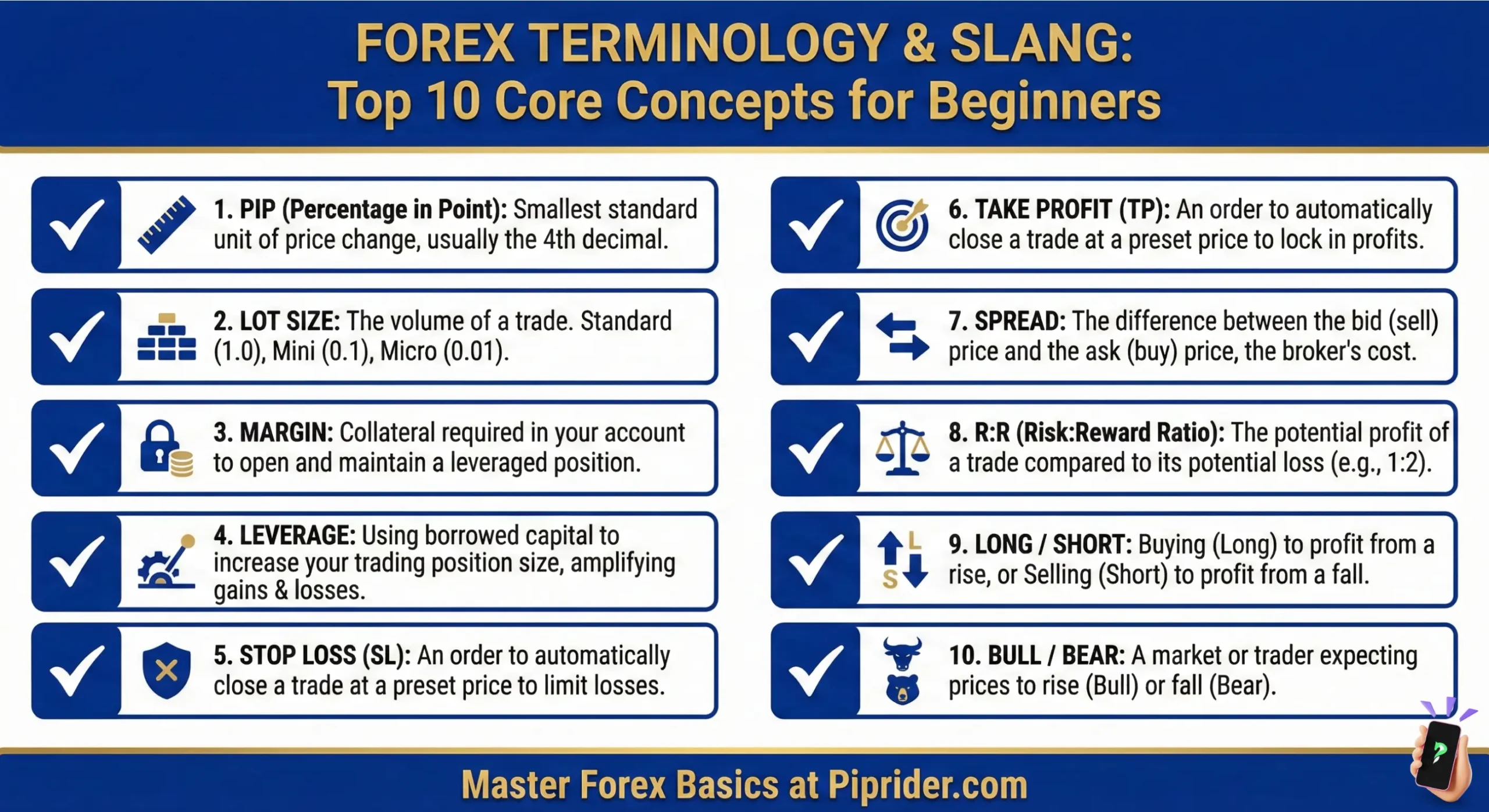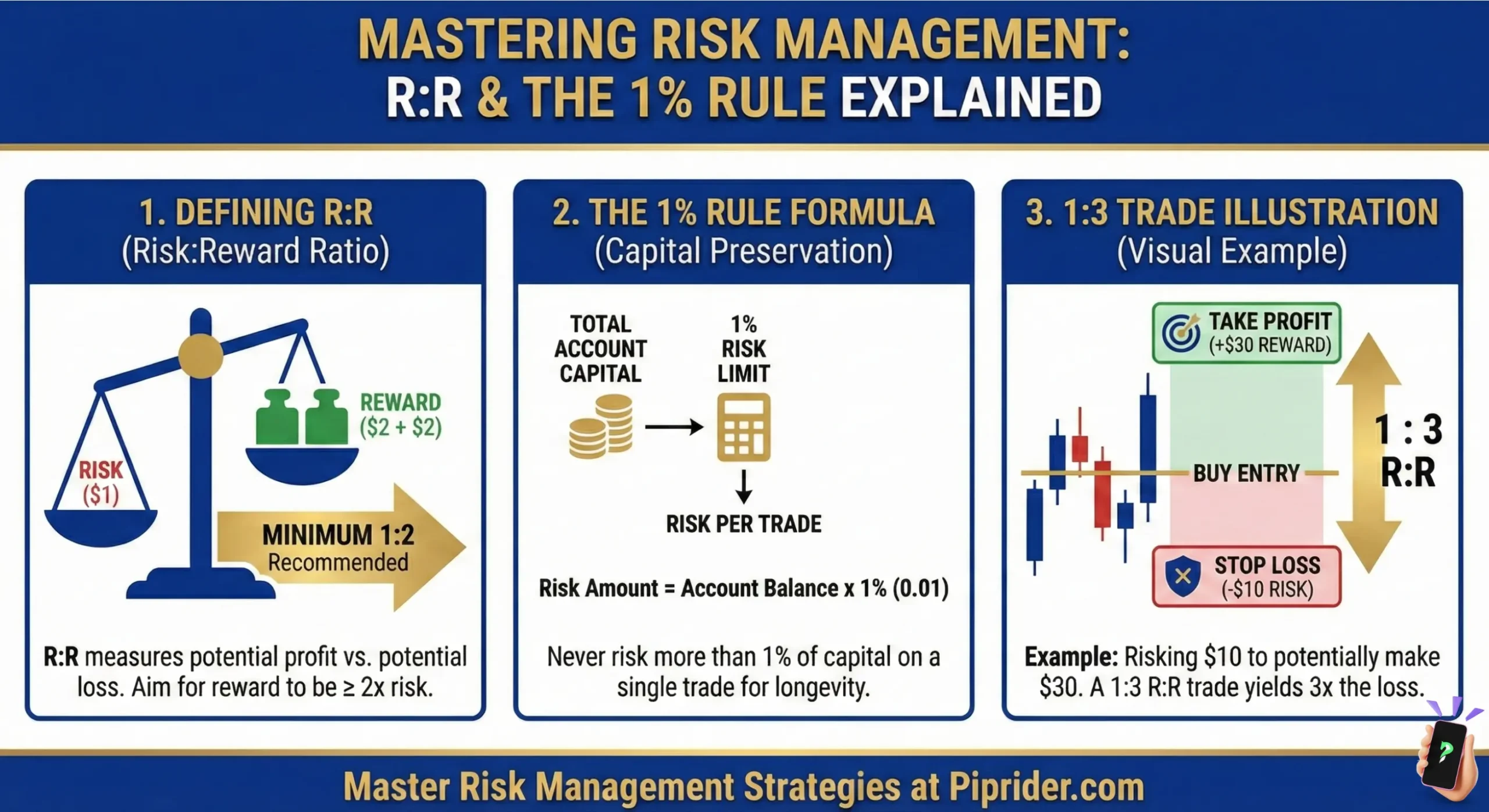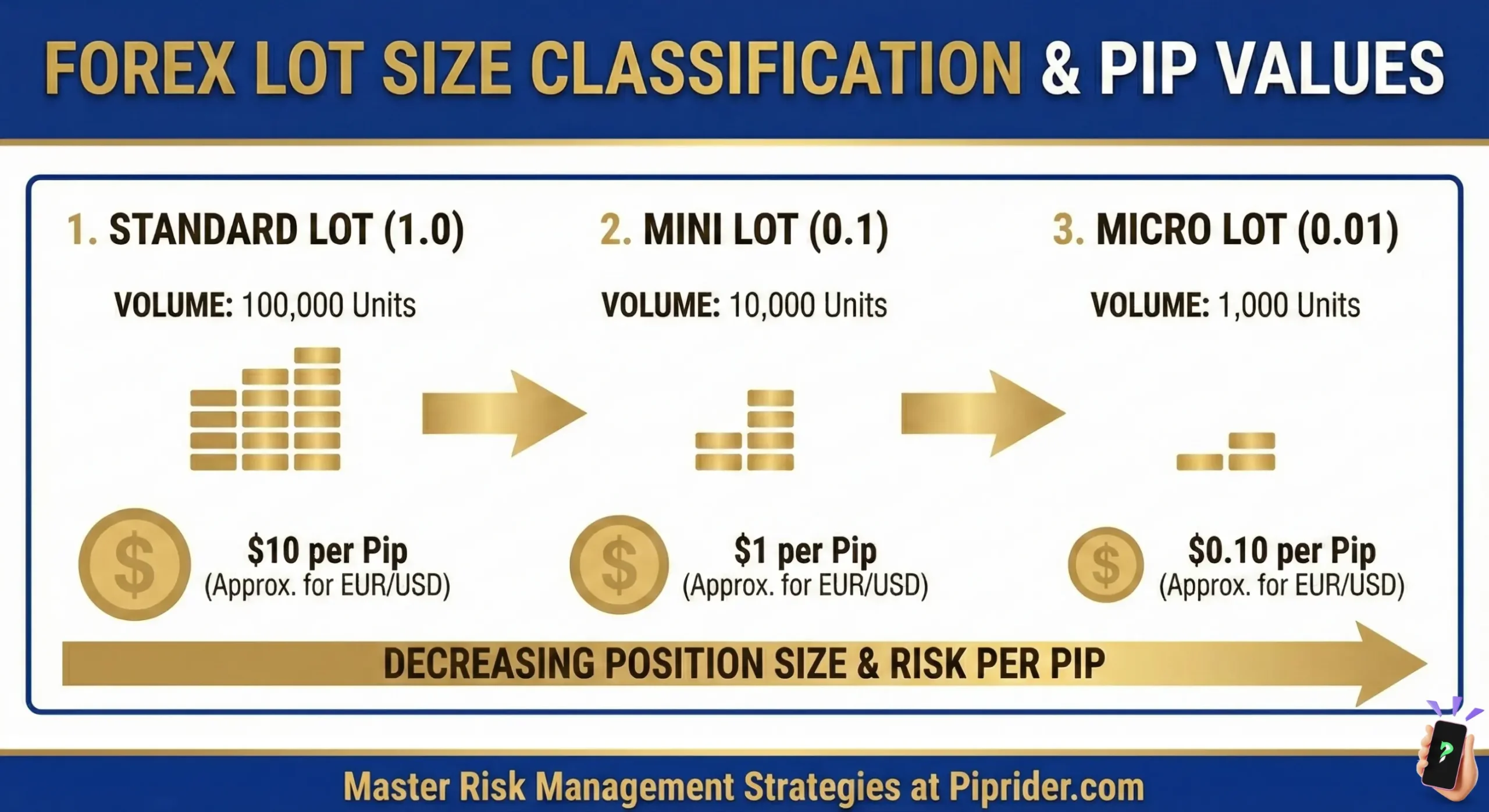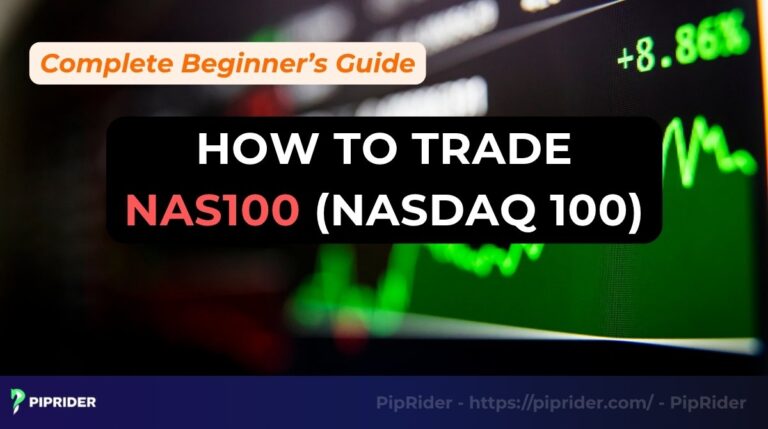In this article, Piprider offers clear, detailed explanations of the most essential forex terminology and trading slang. Whether you’re a beginner or an intermediate trader, mastering this language is crucial for success. From core technical concepts to fascinating currency nicknames, you’ll fully grasp the vocabulary of the Forex market, helping you trade with confidence and seamlessly integrate into the global trading community.
Key Takeaways
- Forex Terminology is required for technical execution and risk management.
- Trading Slang is vital for fast communication and community integration.
- Understanding both categories prevents costly errors and ensures accurate comprehension of financial analysis.
- The language is rooted in history, reflecting long-standing sentiment and trading psychology.
- This guide provides a comprehensive foundation covering basic terms, currency nicknames, price behavior, and strategic slang.
1. What Is Forex Terminology and Trading Slang?
Trading language is split into two essential categories: terminology and slang. Understanding the distinction is crucial for both professional execution and community communication.

- Terminology (Jargon): The formal, technical, and official vocabulary of the financial market. Jargon words have precise, universally accepted meanings used for calculations, contracts, and risk management (Morgan Stanley Careers, n.d.).
- Slang (Colloquialisms): The informal, communal language traders use. Slang is used for speed, expressing psychological concepts, and referring to market items with colorful, descriptive nicknames (IG International, 2021; Investopedia, 2015).
The main difference lies in their purpose: jargon prioritizes precision, while slang prioritizes speed and context.
| Language Type | Example | Purpose in Trading |
| Formal Terminology (Jargon) | Pip and Spread | Used for exact measurement (measures profit/loss) and calculating costs (transaction cost). These terms are non-negotiable. |
| Informal Slang (Colloquialisms) | Cable and Loonie | Used for quick reference (GBP/USD pair; Canadian Dollar). Their use signals quick comprehension and community integration. |
Mastering both is necessary: use the formal terms for accurate execution and risk control, and use the slang for fast, effective communication with fellow speculators.
Read more:
CFD Trading: A Comprehensive Guide For Beginners
2. Basic Forex Terminology Every Beginner Must Know
Mastering the following terms is the essential first step for any new forex trader. These technical words are the foundation for managing risk, calculating costs, and executing trades accurately in the foreign exchange market.
- Pip: Point in Percentage is the smallest standardized unit of price change, critically important because it’s the universal measure used to calculate all profits and losses and risk exposure.
- Pipette: is simply one-tenth of a Pip, allowing for more granular pricing.
- Lot Size: The standardized unit of transaction volume (a standard lot is 100,000 units), defining the overall value of your trade.
- Leverage: Borrowed capital that magnifies potential profits while simultaneously dramatically increasing risk.
- Margin: Amount of your own capital required as collateral, acting as a security deposit to secure the leveraged position.
- Equity: The real-time, current value of the account, which represents its true health and current tradable capital.
- Spread: The difference between the Bid price and the Ask price, essentially representing the cost of the transaction and the most common way brokers earn income.
- Bid-Ask: The Bid is the price at which traders can sell, and the Ask is the price at which traders can buy. These two prices are vital, as they determine exact entry and exit points.
- Commission: A direct fee charged by the broker per trade executed, a transparent cost that must be factored into your strategy’s profitability.
- Long vs. Short: These terms define the directional assumption of investors’ trade. Long means buying in anticipation of a rising price, while Short means selling in anticipation of a falling price, instantly communicating market bias.
- Stop Loss (SL): An automatic order to close a trade at a specified loss level, making it the most critical tool for limiting potential losses and managing risk.
- Take Profit (TP): An automatic order to close a trade at a specified profitable level, which is essential for securing gains and removing emotion from closing profitable positions.
Read more:
Forex Order Blocks: Complete Guide with Examples & Strategies
3. Slang Terms for Money
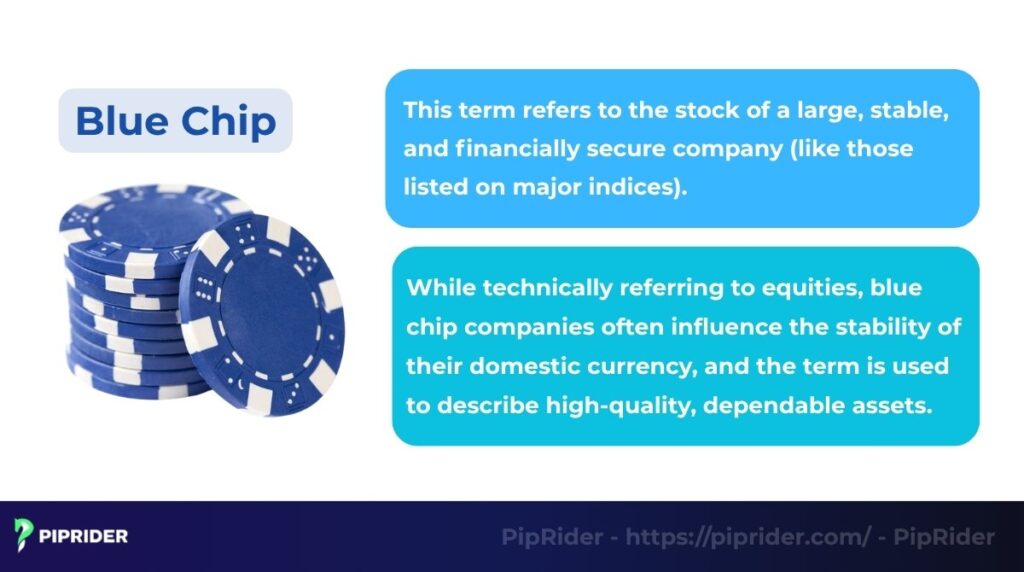
These informal terms are frequently used in chats and forums, particularly those influenced by U.S. financial culture, to refer quickly to currency or wealth.
- Cash, Green, Cheddar, Benjamins: All are general, highly informal synonyms for money. Benjamins specifically refers to the U.S. $100 bill, which features Benjamin Franklin.
- Buck (USD): The most common informal nickname for the U.S. Dollar.
- Blue Chip: This term refers to the stock of a large, stable, and financially secure company (like those listed on major indices). While technically referring to equities, blue chip companies often influence the stability of their domestic currency, and the term is used to describe high-quality, dependable assets.
4. Trading Terminology Related to Animals
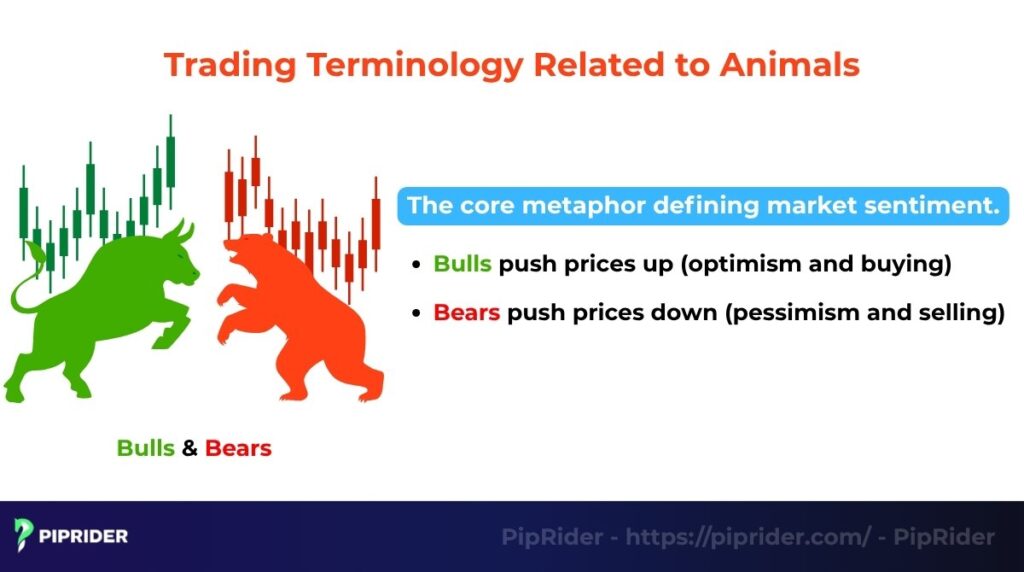
Animal metaphors are extremely common in the market, used to categorize participants, describe market sentiment, or label rare events.
- Bulls & Bears: This is the core metaphor defining market sentiment. Bulls push prices up (optimism and buying), while Bears push prices down (pessimism and selling).
- Wolves of Wall Street: A derogatory term for aggressive, high-risk traders, often associated with unethical or manipulative practices.
- Black Swans: An extremely rare, unpredictable, and high-impact event that causes massive market disruption and volatility (e.g., a major economic crisis or sudden geopolitical shock).
- Dead Cat Bounce: A temporary, minor price recovery following a sharp, deep decline. It is considered a false signal because the price typically resumes its downtrend immediately afterward.
- Whales: Institutional or ultra-high-net-worth investors whose massive transaction volume can single-handedly move the price of less liquid assets.
- Hawks & Doves: Terms describing central bank policy-makers. Hawks favor raising interest rates (tight monetary policy), while Doves favor low rates (easy monetary policy).
- Unicorns: Used humorously to describe a trade or investment that is so rare, massive, and successful that it seems mythical.
- Tigers: Often refers to aggressive, sharp, and quick traders who aim for large, rapid profits.
Example: If the U.S. Federal Reserve issues a statement where several members voice concerns about inflation and suggest quicker interest rate hikes, those members are referred to as being Hawkish, which typically causes the USD to strengthen. Conversely, if members suggest keeping rates low to boost employment, they are considered Dovish, which tends to weaken the USD.
5. Popular Slang for Market Movements
This slang is used for rapid communication in trading communities to describe high-volatility events, rapid trends, and price manipulation.
- Short Squeeze: Occurs when the price rises sharply, forcing short sellers (who bet the price would fall) to buy back the asset at a loss to cover their positions. This buying action, in turn, fuels the price rally even higher.
- Long Squeeze: It is the opposite, where a sudden price drop forces long traders to sell their positions immediately, accelerating the downtrend.
- To the Moon: An extremely optimistic phrase used for a currency or asset experiencing a powerful, sudden, and parabolic price surge.
- Tanking: Slang used to describe a sharp and rapid decline in price. When a market is “tanking,” it is selling off aggressively and quickly.
- Whipsaw: A market condition characterized by high volatility where the price moves strongly in one direction, then rapidly reverses, trapping traders who took a position on the initial move.
- Jigged Out: Slang for when a trader is unfairly stopped out of a position (hitting their Stop Loss) just before the price reverses and moves in the intended, profitable direction.
Example (Whipsaw): A trader goes Long on USD/JPY after the price seems to break a resistance level. Moments later, the price reverses violently, triggering the trader’s Stop Loss for a small loss. Then, the price reverses again, moving back up in the original direction, illustrating that the market moved like a snapping whip, trapping both buyers and sellers.
6. Popular Nicknames for Forex Pairs and Assets
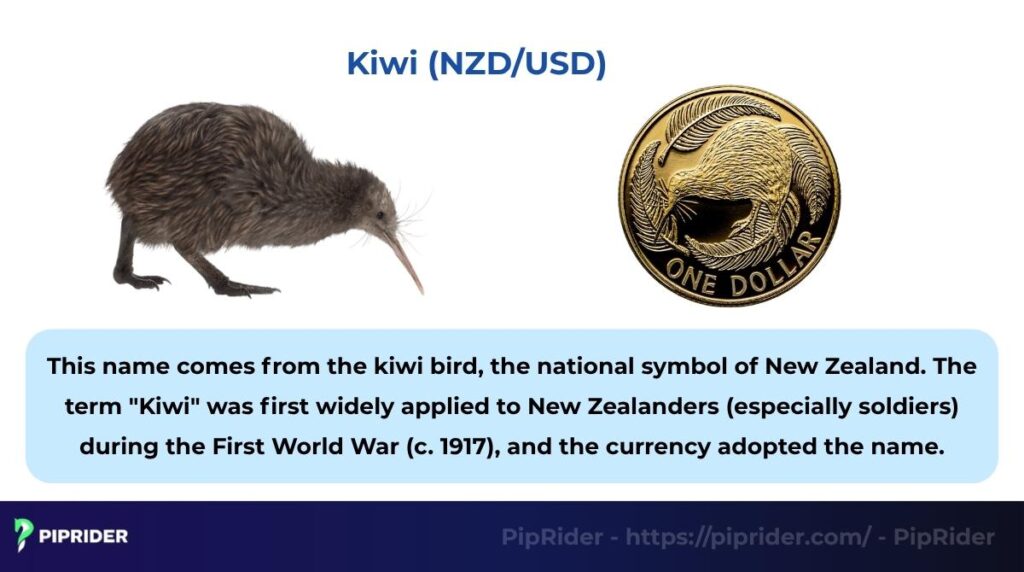
Nicknames are vital for efficient communication among traders, often incorporating historical references or national symbols.
- Cable (GBP/USD): This nickname originated in the mid-19th century (specifically, the first successful working was laid in 1866). It refers to the submarine communications cable that was first used to transmit the exchange rate between the U.S. Dollar and the British Pound across the Atlantic.
- Fiber (EUR/USD): A simple, short term for the Euro/U.S. Dollar pair, which is the most heavily traded pair globally.
- Loonie (USD/CAD): This nickname originated in 1987 when Canada introduced its new one-dollar coin. The coin features the image of a common loon (a bird), and the nickname stuck.
- Aussie (AUD/USD): Derived directly from the country’s common nickname.
- Kiwi (NZD/USD): This name comes from the kiwi bird, the national symbol of New Zealand. The term “Kiwi” was first widely applied to New Zealanders (especially soldiers) during the First World War (c. 1917), and the currency adopted the name.
- Swissy (USD/CHF): A casual term for the U.S. Dollar/Swiss Franc pair.
- Ninja (USD/JPY): A less common nickname for the U.S. Dollar/Japanese Yen pair, sometimes used to describe its stealthy or fast movements.
7. Technical Slang and Trading Techniques
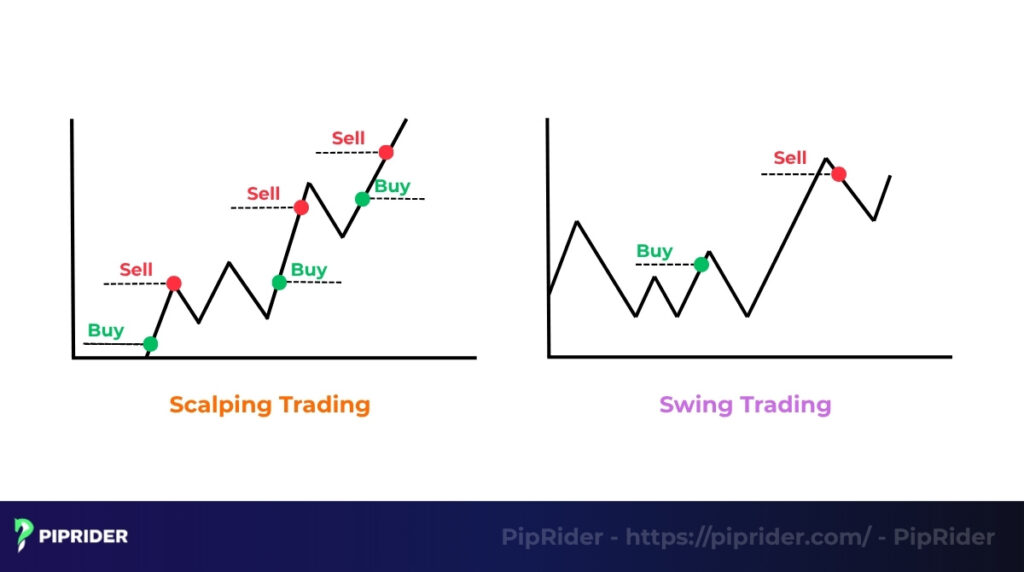
This section covers common informal terms used to describe specific, deliberate trading strategies, methods, or even illegal manipulation schemes.
- Pump and Dump: This is an illegal, manipulative scheme where a group artificially pumps (inflates) the price of an asset, often through aggressive social media promotion. The group then immediately dumps (sells) their own holdings for a profit, leaving other investors with losses.
- Fading: A contrarian technique where a trader deliberately places a position opposite to a strong, immediate price move. The trader is betting that the initial move was exaggerated or “overdone” and will quickly revert.
- Scalping: An ultra-short-term style that involves opening and closing positions extremely quickly (seconds to minutes) to capture small profits repeatedly throughout the day.
- Swing Trading: A style that holds positions for several days or weeks, aiming to capture larger swings or movements within a prevailing trend.
- Position Trading: A long-term strategy where traders hold positions for months or even years, often ignoring short-term volatility to profit from major, sustained trends.
- Squiggly Lines: A humorous, informal way traders refer to the various technical indicators, oscillators, moving averages, and complex chart patterns displayed on price charts.
8. Trading Slang in Market Conditions and Psychology
This section covers the informal language used to describe prevailing market conditions and, crucially, the psychological states and emotional pitfalls of traders.
- Bull & Bear Markets: These terms describe the overall, long-term conditions of the financial arena. A bull signifies a period where prices are generally rising (optimism), while a bear signifies a period where prices are generally falling (pessimism).
- Market Corrections and Rallies: These describe short-term price movements within a larger trend. A market correction is a temporary price decline (usually 10% or less) that occurs within a broader upward trend. A rally is a rapid, temporary increase in price that occurs during a broader downtrend.
- FOMO (Fear of Missing Out): A powerful psychological trap where traders rush into a position purely because they see others making money, ignoring their own analysis and risking irrational decisions.
- HODL (Hold On for Dear Life): An intentional misspelling that originated as a meme. It means to hold onto an asset, even through extreme price drops and high volatility, based on the unwavering belief that the asset will eventually recover or rise significantly.
- Revenge Trading: The act of acting impulsively and aggressively immediately after suffering a loss, attempting to quickly recoup the money. This is a common emotional mistake that usually leads to larger, faster losses.
- Diamond Hands vs Paper Hands: The first one is slang for a trader who holds an asset through extreme volatility and pressure, showing strong conviction and resilience. The second refers to a trader who sells an asset quickly at the first sign of volatility or small loss due to fear or lack of conviction.
Example: Two traders buy the same currency pair. When the price suddenly drops 100 pips in an hour:
- The Paper Hands trader panics and sells immediately to prevent further loss.
- The Diamond Hands trader holds the position, trusting their long-term analysis, and is rewarded when the price reverses and moves 300 pips in their favor an hour later.
9. Risk Management Terminology
These formal terms are the foundation of sound trading and are essential for preserving capital and ensuring longevity in the market.
- Diversification: The strategy of spreading investments across different, uncorrelated assets, markets, or strategies (e.g., not trading only GBP/USD) to reduce overall exposure to any single risk factor.
- Hedging: The act of taking an offsetting position in a related asset or instrument to protect an existing position against adverse price movements.
- Position Sizing: The critical calculation used to determine the exact lot size or number of units to trade. This ensures that the monetary risk on any single trade is limited to a pre-defined, small percentage (e.g., 1%) of the total account equity.
- Risk-Reward Ratio (RRR): Comparison of maximum potential loss (risk) versus maximum potential profit (reward) for a trade. A common ratio is 1:2, meaning potential profit is twice the size of potential loss.
- Trailing Stop and Stop-Loss Orders: A Stop-Loss Order is the most vital tool, an automatic instruction to close a trade at a specific loss level to protect capital. A Trailing Stop is an advanced Stop-Loss that automatically moves (or trails) up as the price moves in your favor. This effectively locks in profit while still protecting the position if the price reverses.
10. FAQs
Here are concise answers to common questions regarding terminology and slang.
11. Conclusion
Mastering the forex terminology and trading slang is non-negotiable for consistent success. Your ability to understand both formal and informal terms directly impacts your decision-making speed and accuracy.
- Formal terminology provides the precision needed for correct risk management and execution.
- Slang and nicknames give you the context required to quickly interpret market sentiment, read broker reports, and integrate easily into global trading discussions.
By building a comprehensive vocabulary, you create a deeper and more memorable knowledge base, increasing the efficiency of your learning process.
Final Vocabulary Checklist:
- Learn the Basics: Nail down Pip, Lot, Leverage, and Margin first.
- Master Nicknames: Use Cable and Fiber to follow news efficiently.
- Understand Psychology & Market Slang: Recognize FOMO, Revenge Trading, and To the Moon to avoid emotional mistakes and quickly gauge sentiment.
- Practice Risk Terms: Apply Risk-Reward Ratio and Position Sizing to every single trade.



